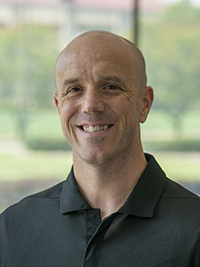Task demonstrability a key component for how groups solve problems most effectively, study shows
LAWRENCE — There is no “I” in team … but there is a “me.”
According to a new study of organizational teams, enhancing task demonstrability may be the key method for how an individual can convince a group to choose the correct solution to a problem.
 “In group decision-making, it can be so difficult to identify who we should listen to because we have all of these heuristics for who’s going to provide the best input,” said Nate Meikle, assistant professor of business at the University of Kansas.
“In group decision-making, it can be so difficult to identify who we should listen to because we have all of these heuristics for who’s going to provide the best input,” said Nate Meikle, assistant professor of business at the University of Kansas.
“We have conflicting motivations, too. I might want to get the right answer, but I also might want to please my boss more than I want to get the right answer.”
His paper titled “The Theory and Measurement of Expertise-Based Problem Solving in Organizational Teams: Revisiting Demonstrability” concludes that the more group members are able to enhance demonstrability — a four-step process that includes demonstrating the correctness of one’s proposals and recognizing the correctness of others’ proposals — the better decisions the group will make. It’s published in Organization Science.
“Demonstrability was a theoretical construct that we’ve tried to make more organizationally accessible by providing a measurement tool for researchers and decision-makers to build on and use when making decisions,” said Meikle, who co-wrote the paper with Bryan Bonner and Kathryn Coll of the University of Utah, Daniel Shannahan of Northern State University and Kristin Bain of the Rochester Institute of Technology.
“Research shows that for groups to make optimal decisions, they need to find the expert and listen to that expert. Demonstrability does a nice job of emphasizing that point. We need to find the person who has the best answer, and then we all need to listen to that person,” Meikle said.
He gives an example of the Space Shuttle Challenger disaster in 1986. A 14-person team was commissioned to uncover the cause of the tragedy. But this wasn’t solved until physicist Richard Feynman brought a sample of the material used in the O-rings of booster rockets, small clamps and a glass of ice water to a meeting. He demonstrated that when he compressed the O-ring material and put it in the liquid, it remained temporarily compressed, making clear its inability to seal at low temperatures — a fatal design flaw.
For Meikle’s research, his team created 42 statements that represented different aspects of demonstrability, such as, “My group had a shared understanding of what we were trying to do.” He then had approximately 200 people read each of the statements and rate the degree to which each of these fit with the descriptions of the four elements of demonstrability. The ratings were used to identify 12 statements that best described such elements. Next, a separate group of approximately 200 people used a team project they had worked on to rate their group on each of the items.
“Because there had been no way to measure demonstrability, everything was theoretical. It had always made logical sense. But it hadn’t been empirically tested. Now we have a measure that people can build on,” Meikle said.
“Organizations can now use this measure and say, ‘Hey, if we want to enhance demonstrability, let’s look at the 12 demonstrability items to see where we might want to focus.’ You administer that to your group and find out where they rate on the different items, and then you can say, ‘Looks like our group really needs to improve step two information sufficiency or some social factors from step four.’”
A native of Idaho, Meikle came to KU last year. He is a former receiver with the BYU Cougars. (He caught a dozen passes in the 2005 Las Vegas Bowl.) He also has a podcast titled “Meikles and Dimes,” where he shares findings gleaned from social science. He teaches courses in leadership and ethics at KU.
Can demonstrability techniques also be applied to a football team, for instance?
“Maybe we have a rookie join our team, and they’re sharing something and they don’t have the status that the established veteran has. We might not pay that rookie as much attention, and now our decision-making process and final outcome might suffer because of it,” he said. “This demonstrability framework shows us how to improve that. So in football, we can imagine the offensive coordinator and the offensive coaches using the demonstrability construct to try to figure out which play to run when. Or the head coach and his staff using the construct to determine who to draft and why.”
Meikle believes this research is relevant anywhere a collective is contemplating difficult choices.
“Every company considers, ‘Who are we going to hire and what market opportunity should we pursue? How are we going to improve employee morale, and how are we going to improve retention?’ Many of these decisions are group decisions that can be improved by running the decision through the lens of demonstrability,” Meikle said.
“In a perfect world, the goal is to make the best group decision possible.”